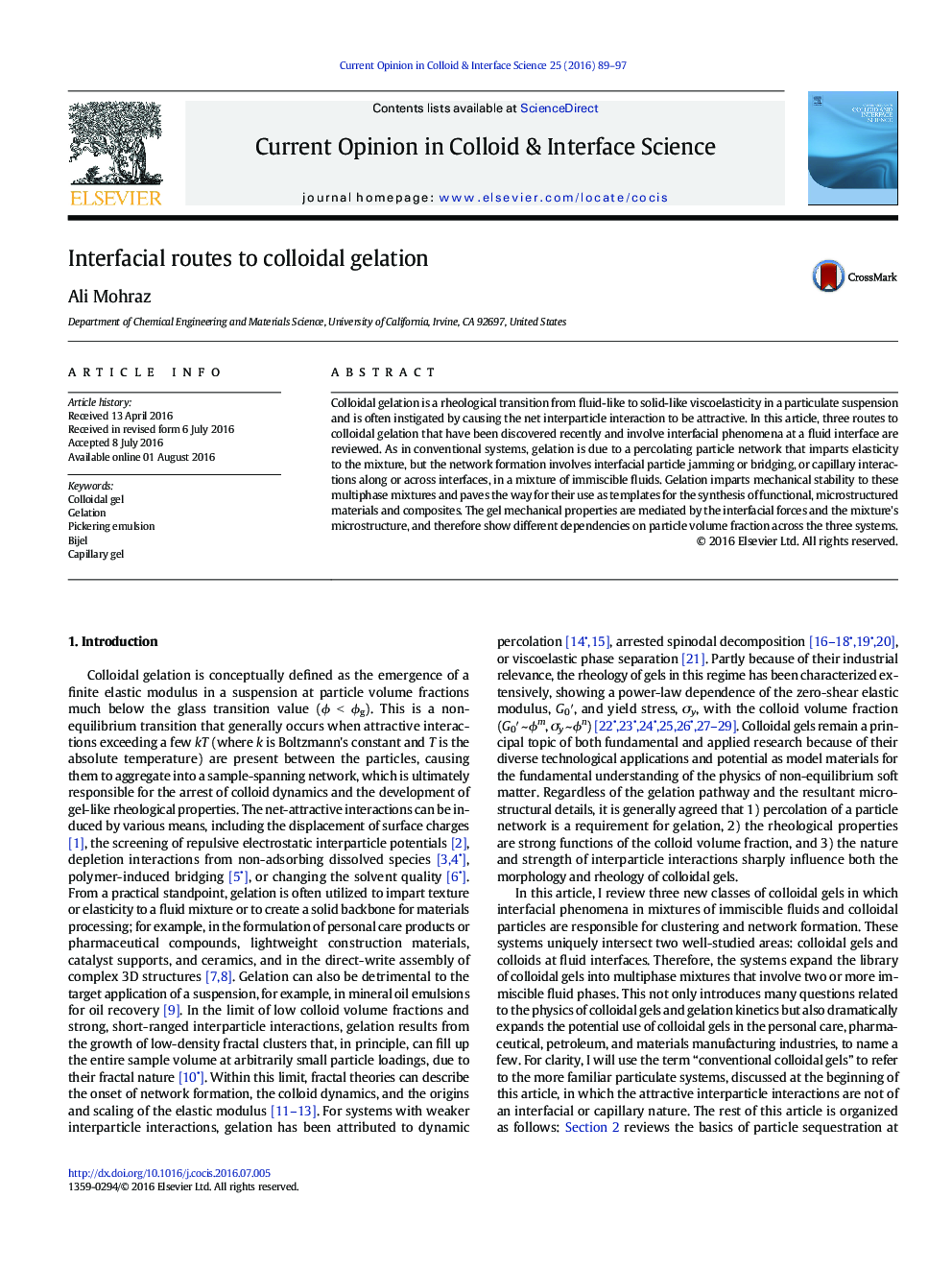| Article ID | Journal | Published Year | Pages | File Type |
|---|---|---|---|---|
| 603124 | Current Opinion in Colloid & Interface Science | 2016 | 9 Pages |
•Three routes to gelation in mixtures of immiscible fluids and colloids are discussed.•Gelation is induced by the formation of a percolating particle network.•Percolation results from jamming, clustering, or bridging, involving fluid interfaces.•The different routes can be combined to strengthen the resulting colloidal gel.
Colloidal gelation is a rheological transition from fluid-like to solid-like viscoelasticity in a particulate suspension and is often instigated by causing the net interparticle interaction to be attractive. In this article, three routes to colloidal gelation that have been discovered recently and involve interfacial phenomena at a fluid interface are reviewed. As in conventional systems, gelation is due to a percolating particle network that imparts elasticity to the mixture, but the network formation involves interfacial particle jamming or bridging, or capillary interactions along or across interfaces, in a mixture of immiscible fluids. Gelation imparts mechanical stability to these multiphase mixtures and paves the way for their use as templates for the synthesis of functional, microstructured materials and composites. The gel mechanical properties are mediated by the interfacial forces and the mixture's microstructure, and therefore show different dependencies on particle volume fraction across the three systems.
Graphical abstractFigure optionsDownload full-size imageDownload high-quality image (194 K)Download as PowerPoint slide
